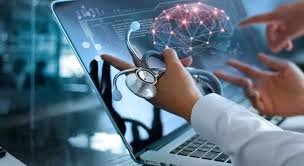Health
Top 2025 Trends in Medical Software Development Services: Insights from a Leading Healthcare Software Development Agency in New York

By 2026, the healthcare industry is going to change significantly. To a great extent, this change is reliant on the implementation of innovative software. Software used in a medical facility isn’t just an option anymore; it’s a necessity. It enhances the quality of treatment, increases efficiency, and brings more accessibility to healthcare.
In this post, we have mentioned major medical software trends of 2025. It also exchanges useful ideas that’ll aid companies in making a difference through effective decision-making. These trends do not exist as mere concepts. They are plans developed based on years of experience in creating good healthcare solutions, and thus, it is crucial to gain a competitive advantage by understanding these trends.
AI and Machine Learning: Altering Healthcare Decision-Making
AI and machine learning are rapidly transforming healthcare. Their integration is already improving diagnostic tools, refining treatment plans, and advancing predictive analytics. By 2026, AI-powered medical software will cater to providers, facilitate smarter decisions, and reduce errors. It will also enable personalized patient care.
Artificial intelligence (AI) and machine learning (ML) have the power to transform medical software by processing massive datasets and uncovering intricate patterns that humans might miss. For companies developing medical software, this is a game-changing opportunity. By seamlessly integrating AI and ML into existing systems, they can empower healthcare organizations to streamline critical workflows, boost efficiency, and fundamentally reshape how care is delivered.
Telemedicine and Remote Patient Monitoring: Virtual Healthcare Aspect
Telemedicine solutions have become a growing priority. Doctors increasingly utilize remote patient monitoring (RPM) tools, which allow real-time tracking of patient health.
Telehealth services integrate with mobile apps, wearables, and cloud-based tools, enabling doctors to address patients remotely, further driving in-person consultations.
Telemedicine is now an essential service, due to which healthcare organizations must ensure their tools are secure. They must also be user-friendly and meet regulatory standards. Creating flexible, scalable telemedicine solutions is the key. This helps providers meet rising demand, improve patient access to care, and reduce costs.
A healthcare software development firm in New York, such as Appinventiv, can help organizations build secure, scalable telehealth solutions that enhance patient access and reduce healthcare costs.
Blockchain for Data Security and Interoperability
Healthcare organizations handle vast amounts of sensitive patient data, making data security and privacy top priorities. Blockchain technology offers a powerful solution by ensuring data integrity and enhancing interoperability. Its secure, transparent, and tamper-proof record-keeping system is ideal for managing medical records while complying with strict privacy regulations.
By integrating blockchain into medical software, hospitals and clinics can strengthen data protection, streamline information sharing, and foster collaboration across diverse healthcare systems. This not only builds greater trust between patients and providers but also safeguards sensitive information from tampering, paving the way for a more secure and connected healthcare ecosystem.
Cloud Computing: Scalability and Flexibility for Healthcare Solutions
Cloud computing’s growth in healthcare signifies a strategic change. It alters how medical organizations view their technology infrastructure. This sector traditionally adopted new technologies slowly. However, cloud adoption has greatly accelerated since 2020.
The transformation extends beyond simple data storage. Healthcare providers now access advanced tools that include sophisticated analytics, AI diagnostics, and real-time collaboration platforms. Previously, these were too expensive. However, now even a community hospital can use advanced imaging analysis software. This is the same software major medical centers use. They pay only for usage, avoiding massive upfront investments.
Security concerns persist but have evolved. Major cloud providers heavily invest in security infrastructure. This often surpasses what individual healthcare organizations can implement. A shared responsibility model is in place. Hospitals can thus focus on their core mission and leverage enterprise-grade security measures.
Health Data Analytics: Leveraging Big Data for Better Care
Healthcare data analytics reached a critical juncture in 2025. Organizations are now moving past basic reporting. They are adopting predictive models that transform care delivery.
Emergency departments now identify high-risk patients before discharge. They no longer wait for readmissions. Staffing algorithms predict patient numbers three days in advance, which reduces overtime costs.
The competitive advantage is clear. Healthcare systems using advanced analytics report significant reductions. They see 15-20% fewer readmissions while also achieving better reimbursement rates. What has changed is accessibility. Predictive analytics once required dedicated data science teams. Now, many electronic health record systems offer these capabilities as standard features.
Population health management identifies community trends proactively. This happens before they escalate into crises. ICU bed management systems predict discharge times. This reduces emergency department boarding while surgical scheduling optimizes room utilization.
A medical software development company with experience in health data analytics can help organizations unlock the full potential of their data, thereby improving patient care and driving operational efficiency.
Mobile Health Applications: Empowering Patients with Digital Tools
Mobile health apps are transforming patient-provider relationships. This change was unimaginable just a few years ago. By 2026, these platforms will be essential tools. Patients will expect them from their healthcare teams.
This shift is already evident. Patients now check lab results on their phones, and this often happens before their doctors even call. Many manage conditions like diabetes or hypertension daily through apps. This replaces quarterly office visits.
The impact on patient engagement is significant. Patients become more invested in their care. This occurs when they can access health information anytime. They can also communicate with providers via secure messaging. As a result, healthcare organizations observe positive outcomes. These include higher medication adherence rates and fewer missed appointments, while also improving overall health outcomes.
Working with experienced healthcare software developers is crucial. These specialists understand technical requirements, which also include HIPAA compliance. They also grasp user experience principles for successful apps and create intuitive platforms. However, these platforms must also meet strict healthcare regulations.
Regulatory Compliance and Cybersecurity: Navigating the Evolving Landscape
The environment of healthcare regulations is still changing, and new privacy and security requirements appear on a regular basis. The increased use of digital tools in healthcare organizations is accompanied by an increased number of challenges that these organizations must be ready to address when it comes to HIPAA, GDPR, and other local legislation compliance to keep patient data safe and face no legal retributions.
To get us to the year 2026, software building teams will be required to incorporate the best practices in cybersecurity in the very first term of the year to make sure the healthcare applications are compliant with the compliance standards and do not jeopardize sensitive information about patients. Working with a development company experienced in navigating this regulatory landscape can ensure that your organization remains compliant and secure.
Voice-Assisted Technologies: Enhancing Accessibility and Efficiency
Healthcare software is increasingly integrating voice-assisted technologies. This boosts both accessibility and productivity. By 2026, voice-enabled tools will allow healthcare providers hands-free operation of medical systems. This will make processes easier and more intuitive.
These technologies will smooth workflows. This is particularly beneficial in high-stress environments like hospitals or clinics, where every second counts. Furthermore, voice-assisted tools enhance patient accessibility. They enable hands-free communication while also assisting individuals with mobility or visual impairments.
Robotics and Automation in Healthcare Software
Robots are becoming more common in healthcare, from helping with surgeries to automating office tasks. As we approach 2026, these technologies will blend more with medical software, boosting what healthcare providers can do and making medical procedures more precise.
Automation in administrative tasks, like scheduling and data entry, can save time for medical staff, letting them pay more attention to patient care. Creating software that backs robotic systems will help healthcare groups to boost their operations and improve patient outcomes.
User-Centric Design and Patient-Centered Care
As healthcare gets more personal, user-friendly design and patient-focused care will become key in medical software creation. By 2026, healthcare softwares will be made keeping patients in mind, making them simple to use and meeting the different needs of today’s patients. Easy-to-use interfaces, quick data access, and tailored experiences will boost patient involvement and make healthcare better.
Putting patients at the center of design has an influence on healthcare providers’ ability to build stronger bonds with patients. This leads to better health results and boosts patient satisfaction.
Conclusion
The medical market is undergoing a profound transformation, driven by rapid advancements in technology. In 2025, embracing cutting-edge innovations is essential for medical software development to meet evolving demands. Key trends include the integration of artificial intelligence (AI) and machine learning (ML), which enable sophisticated data analysis and personalized care. The widespread adoption of cloud-based solutions is also revolutionizing the industry, offering scalability and accessibility. Additionally, mobile health apps are gaining traction, empowering patients and providers with on-the-go tools.
For organizations looking to navigate these trends and implement cutting-edge software solutions, partnering with an experienced healthcare software development company is crucial. Appinventiv, a leading healthcare software development firm in New York, has been at the forefront of helping healthcare organizations innovate and scale their digital solutions.
Is your healthcare organization prepared to leverage these trends and lead the charge in innovation?
-

 Celebrity1 year ago
Celebrity1 year agoWho Is Jennifer Rauchet?: All You Need To Know About Pete Hegseth’s Wife
-

 Celebrity1 year ago
Celebrity1 year agoWho Is Mindy Jennings?: All You Need To Know About Ken Jennings Wife
-

 Celebrity1 year ago
Celebrity1 year agoWho Is Enrica Cenzatti?: The Untold Story of Andrea Bocelli’s Ex-Wife
-

 Celebrity1 year ago
Celebrity1 year agoWho Is Klarissa Munz: The Untold Story of Freddie Highmore’s Wife
















